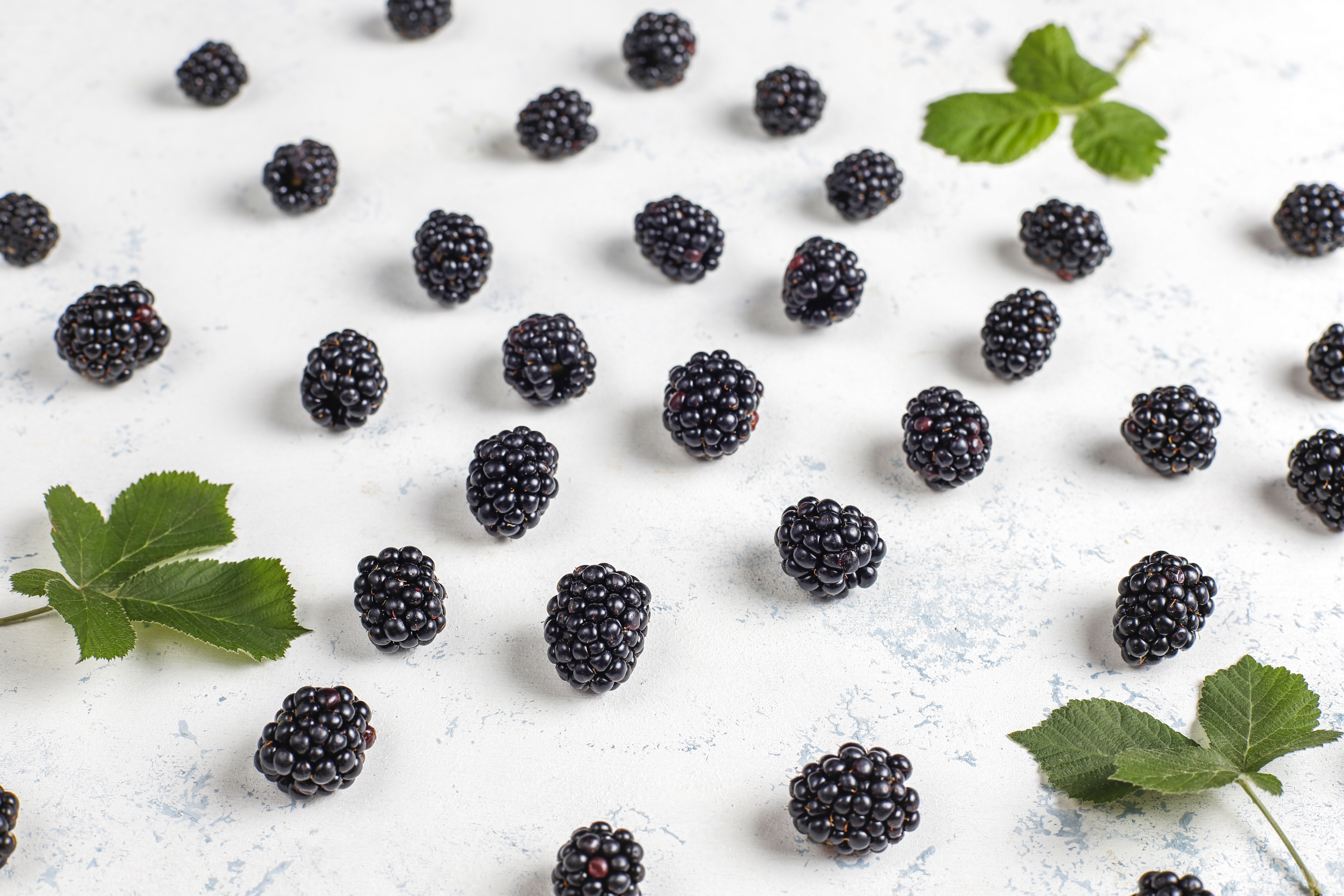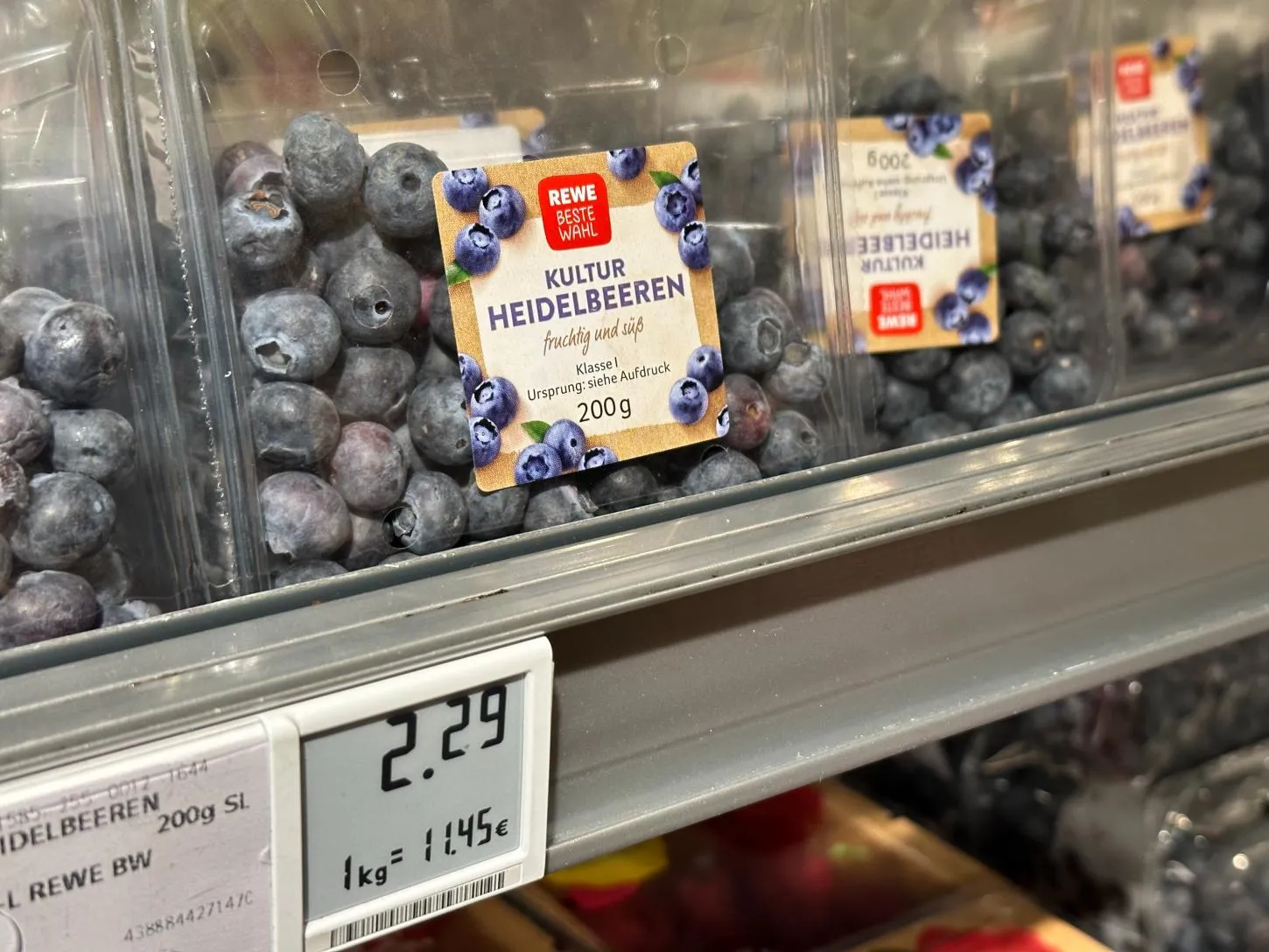Italian Berry hosts in this article an exclusive contribution by Hannelie Human, an expert on pollination and bees, researcher at the University of Pretoria (South Africa) and consultant to major global companies. Starting with a description of the presence of bees in South Africa's agriculture, the article focuses on the benefits to producers of blueberries that proper pollination brings and what are the critical aspects of this essential practice to ensure sustainable incomes for farmers.
South Africa is the southernmost country on the African continent and is known for its natural beauty and climate that ranges from desert and semi-desert to subtropical with areas of both winter and summer rainfall. South Africa is home to two very distinctive bee species. The southern and western Cape region is home toApis mellifera capensis, the Cape honeybee, whileApis mellifera scutellata, the African honeybee, is found in the north and east of the country.

Diffusion of major bee species in South Africa
Summary
THE TWO SPECIES OF BEES IN SOUTH AFRICA
The African honeybee is a very aggressive bee: the queen is the only fertile bee, and the workers are not fertile in the presence of the queen. The workers have the ability to lay unfertilized eggs. In the 1950s these bees were introduced to Brazil and their adaptability allowed them to hybridize with introduced bees. 70 years later, these bees became known as the infamous killer bees, which moved steadily northward into the United States.


Cape bees, on the other hand, tend to be more docile, but that is not to be underestimated. They have unique characteristics: worker bees have the ability to produce both male and female offspring and, in addition, have the ability to produce pheromones that smell like the queen. These characteristics allow them to parasitize colonies of other subspecies, such as African bees. They invade a colony, begin laying eggs, and because they do not contribute to any of the colony's tasks, the host colony begins to decline and inevitably collapses.
THREATS TO BEE POPULATIONS IN SOUTH AFRICA
Like any other bee population, South African bees face insects, pests, diseases, pesticides, and pollination stress. Vandalism of hives and apiaries, theft, and annual fires are the most serious threats to the beekeeping industry. In the northern parts of the country, African bees have to deal with the unique social parasite capensis, which unfortunately is maintained by beekeeping practices and is regulated by legislation. The Varroa mite was introduced to South Africa in the 1990s, but our bees have so far survived without any chemical treatment. Small hive beetles, a notifiable pest according to the OIE, are endemic to sub-Saharan Africa and have evolved along with our bees.
Both Varroa and small hive beetles continue to cause concern because of their ability to transfer disease. American foulbrood was introduced to the Western Cape in 2009 and caused the loss of colonies, but the spread has been limited to the Western Cape. South African beekeepers use a small fraction of the honey bee population that is supplied by swarms. We continually urge beekeepers to sustainably utilize our wild population.
THE PROFESSIONAL ACTIVITY OF POLLINATION
South African beekeepers can be divided into:
- hobbyist beekeepers, small beekeepers (less than 200 hives),
- Honey producers and commercial beekeepers (200-800 hives)
- Professional beekeepers who manage more than 800-10,000 hives.
Pollination services are needed for several crops, including blueberries, sunflowers, macadamia and deciduous fruit crops.
Honey bees are the most economically viable pollinators because a large number of colonies can be transported great distances in a short period of time. Pollination services vary from grower to grower and also by crop type. Canola and citrus do not require pollination by bees and there is no payment from the farmer to the beekeeper, but in exchange for permission to put hives on the farm the beekeeper can compensate the farmer with honey.
When crop pollination is required, the farmer pays the beekeeper and there is a contract between beekeeper and farmer. Pollination fees are calculated through a formula that incorporates the beekeeper's production costs, such as supplementary feed, labor, and transportation.
THE BENEFITS OF INTERACTIONS
In my view, pollination is not only a mutually beneficial interaction between bees and flowers, but also between growers and beekeepers. It requires an exchange of services between the two parties who both receive a benefit from the interaction. This benefit usually comes at a cost: the investment of the flowers. To produce floral rewards, honey bees invest energy to collect food and in return pollinate flowers.
This benefit-cost scenario gets complicated between growers and beekeepers, as neither actor is being 100 percent altruistic. Successful berry production depends on careful attention to every aspect of production, of which pollination, while very important, is only part of the process.

POLLINATION OF THE BLUEBERRY
Large numbers of small flowers from blueberry provide sufficient nectar at concentrations suitable for bees and pollen with low protein content, which is not suitable for optimal brood rearing. The ease of collection of these floral rewards by honey bees depends on the size of the flower, the shape and arrangement of the flower components, and, consequently, the quality/success of pollination.
Bees experience nutritional stress during pollination, and colonies often become weaker than when they arrived. To ensure the sustainability of colonies, the beekeeper must adopt good management strategies. Strategies include supplemental food during pollination, especially in the colder winter months, and good sources of pollen in bloom after pollination.
Honey bee densities in South Africa range from 2 to 15 per hectare and are highly dependent on the variety of blueberry. Flower visitation rates are acceptable and range between 4 and 8 honey bees per bush/per period of time during peak flowering.
THE CHALLENGES OF PROFESSIONAL POLLINATION
The biggest challenge for pollination is the management of hives under nets. Hives placed outside of netted orchards ensure pollination throughout the orchard, but this is an anecdotal statement by beekeepers, whereas optimal pollination within orchards can only be ensured through appropriate pollination standard hives.
Beekeepers must prepare enough hives before the pollination season and must not reuse hives too often. The monotonous orchard environment poses a navigational challenge for bees. Since bees use the visual characteristics of the food source, such as color, shape and size, to orient themselves, adding landmarks and/or other visual cues can improve the rate at which foragers return to their hives.
POLLINATION AS AN INVESTMENT
Producers of high-value crops, such as macadamia and blueberries, are becoming increasingly aware of their investments in pollination and are also investing money in quality monitoring.
Growers at blueberries view pollination as an investment and therefore expect a professional pollination service-not a "leave and go" of hives-and optimal fruit quality in return for their investment. This pollination service includes quality hives and proper bee activity in the orchard.
The difference between good pollination and bad pollination is a loss of income. Growers are well aware of environmental issues and are willing to implement win-win strategies to promote sustainable pollination, such as timing spraying to reduce the risk of pesticide exposure, planting a variety of beneficial plants to support bee health, and providing additional food sources during pollination. Promoting positive relationships between beekeepers and growers is therefore essential.
LISTEN TO HANNELIE HUMAN IN EPISODE #4 OF BERRY TALKS.
Cover photo: Apis mellifera scutellata (photo: H. Human)
All rights reserved - Italian Berry - CC BY License









